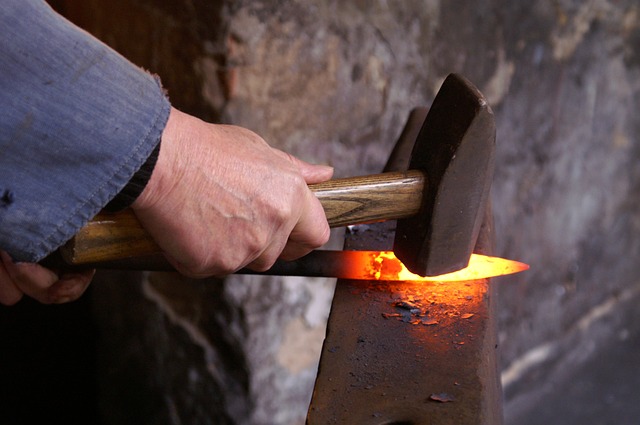
A Brief History of Carbon Steel – Part 1
Carbon steel first appeared around the year 500 AD in Damascus steel swords as well as Japanese swords. They were prized for their sharp edges and sturdiness compared to other weapons of the era. The composition of these swords was very similar to modern carbon steel, yet superior in several mysterious ways.
It is believed that the first instances of carbon steel were created by mistake as swordsmiths used iron ore as the primary metal for crafting swords. Because iron required extreme heat to smelt it, smiths used coal to generate it, which brought with it trace elements of carbon into the molten metal. The result: a new iron alloy, carbon steel.
When carbon is introduced to iron in just the right amounts it resulted in a new iron alloy, carbon steel. The problem was that the technology of the time couldn’t control the carbon introduction process and couldn’t consistently produce quality weapons. It was a trial and error process at best.
Meanwhile around the 3rd century, the areas of India and modern day Sri Lanka, metalsmiths perfected the creation of producing what is known as Wootz steel. It is believed that these ancient metalsmiths used a process known as pattern welding–the act of forming a blade using several pieces of metals of different composition, and then forge welding it, twisting it and manipulating it into a pattern.
It is believed that Arabs brought ingots of this steel to Damascus where a thriving industry of sword making existed, which it is believed that this is where Damascus steel got its name. Damascus blades were reputed to be sharp enough to slice a single strand of hair or sever the barrel of a rifle.
The mythical reputation of Damascus swords persists even today, because the secrets of how Damascus steel is produced has been lost over the years and no modern metal worker has been able to recreate it since.
This is the end of the first part of a Brief History of Carbon Steel. Tune in next month for part 2.
Turn to Forged Components, Inc. for your Carbon Steel ASME flanges
Carbon steel is one of Forged Components’ primary metals used in ASME flanges, blind flanges, and pressure vessel flange. Contact us for your API blind manufacturing needs at (281) 441-4088, or go to our Contacts page for the other ways to reach us for answers to your questions.
